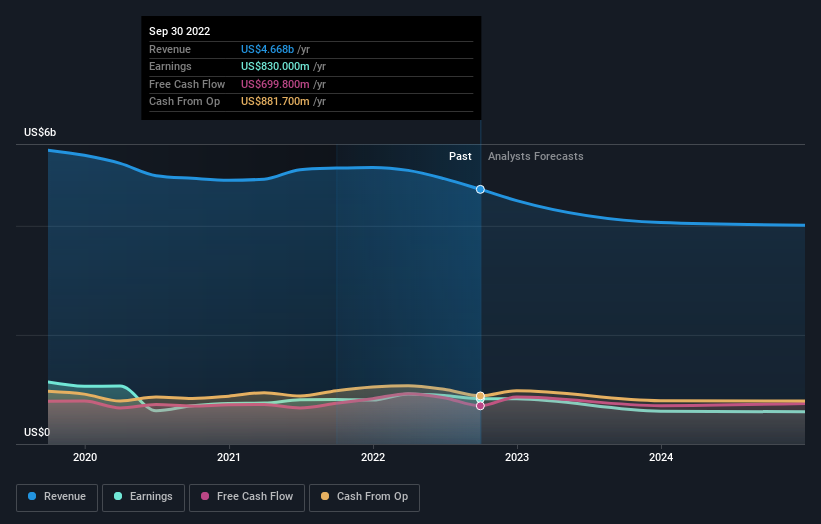When Should You Buy The Western Union Company (NYSE:WU)?
The Western Union Company (NYSE:WU), is not the largest company out there, but it saw a double-digit share price rise of over 10% in the past couple of months on the NYSE. As a mid-cap stock with high coverage by analysts, you could assume any recent changes in the company’s outlook is already priced into the stock. But what if there is still an opportunity to buy? Let’s examine Western Union’s valuation and outlook in more detail to determine if there’s still a bargain opportunity.
View our latest analysis for Western Union
What's The Opportunity In Western Union?
Good news, investors! Western Union is still a bargain right now according to my price multiple model, which compares the company's price-to-earnings ratio to the industry average. In this instance, I’ve used the price-to-earnings (PE) ratio given that there is not enough information to reliably forecast the stock’s cash flows. I find that Western Union’s ratio of 6.44x is below its peer average of 28.24x, which indicates the stock is trading at a lower price compared to the IT industry. What’s more interesting is that, Western Union’s share price is quite stable, which could mean two things: firstly, it may take the share price a while to move closer to its industry peers, and secondly, there may be less chances to buy low in the future once it reaches that value. This is because the stock is less volatile than the wider market given its low beta.
What does the future of Western Union look like?
Future outlook is an important aspect when you’re looking at buying a stock, especially if you are an investor looking for growth in your portfolio. Although value investors would argue that it’s the intrinsic value relative to the price that matter the most, a more compelling investment thesis would be high growth potential at a cheap price. Though in the case of Western Union, it is expected to deliver a highly negative earnings growth in the next few years, which doesn’t help build up its investment thesis. It appears that risk of future uncertainty is high, at least in the near term.
What This Means For You
Are you a shareholder? Although WU is currently trading below the industry PE ratio, the adverse prospect of negative growth brings about some degree of risk. Consider whether you want to increase your portfolio exposure to WU, or whether diversifying into another stock may be a better move for your total risk and return.
Are you a potential investor? If you’ve been keeping an eye on WU for a while, but hesitant on making the leap, I recommend you research further into the stock. Given its current price multiple, now is a great time to make a decision. But keep in mind the risks that come with negative growth prospects in the future.
So while earnings quality is important, it's equally important to consider the risks facing Western Union at this point in time. For instance, we've identified 2 warning signs for Western Union (1 shouldn't be ignored) you should be familiar with.
If you are no longer interested in Western Union, you can use our free platform to see our list of over 50 other stocks with a high growth potential.
Have feedback on this article? Concerned about the content? Get in touch with us directly. Alternatively, email editorial-team (at) simplywallst.com.
This article by Simply Wall St is general in nature. We provide commentary based on historical data and analyst forecasts only using an unbiased methodology and our articles are not intended to be financial advice. It does not constitute a recommendation to buy or sell any stock, and does not take account of your objectives, or your financial situation. We aim to bring you long-term focused analysis driven by fundamental data. Note that our analysis may not factor in the latest price-sensitive company announcements or qualitative material. Simply Wall St has no position in any stocks mentioned.
Join A Paid User Research Session
You’ll receive a US$30 Amazon Gift card for 1 hour of your time while helping us build better investing tools for the individual investors like yourself. Sign up here

 Yahoo Finance
Yahoo Finance 
